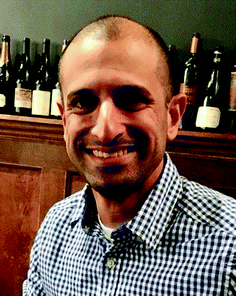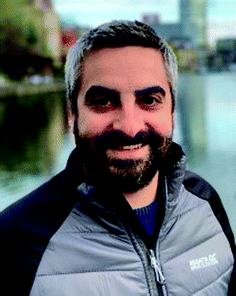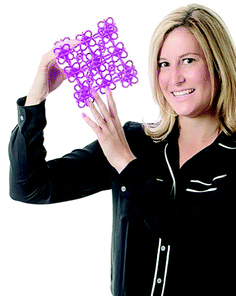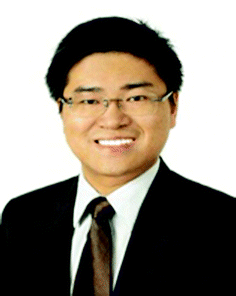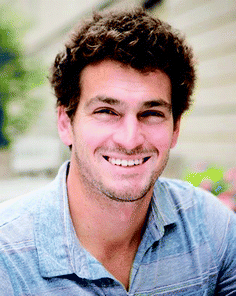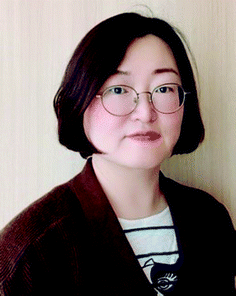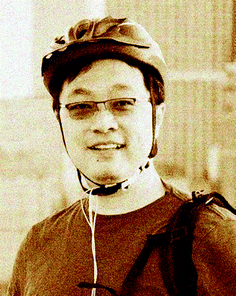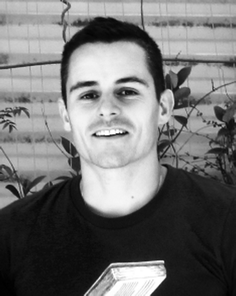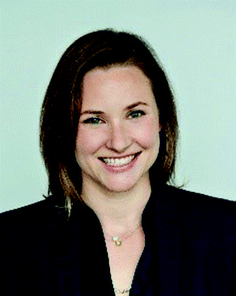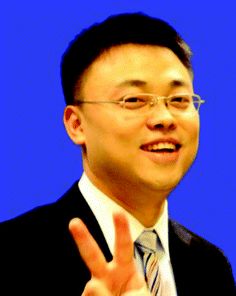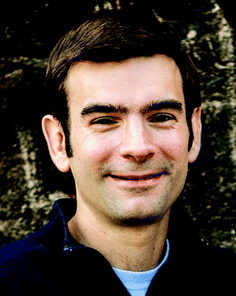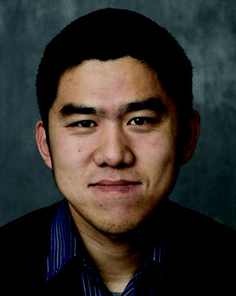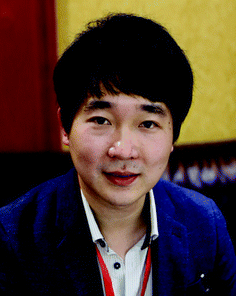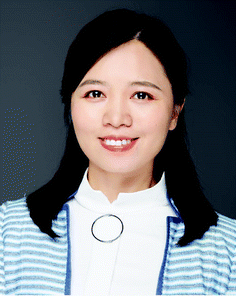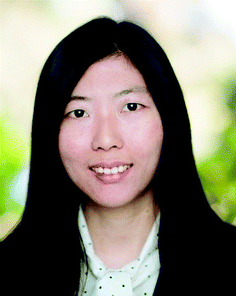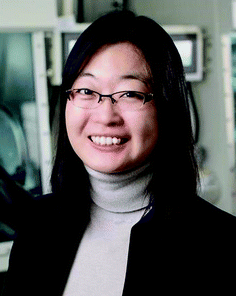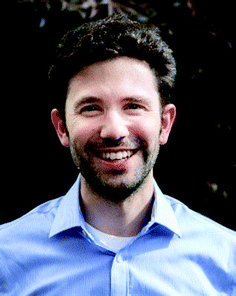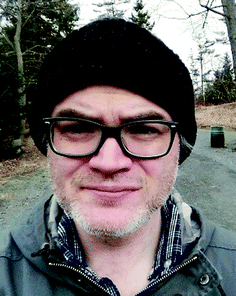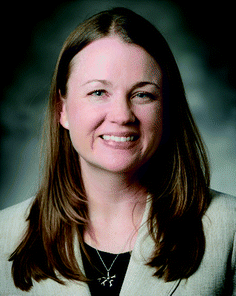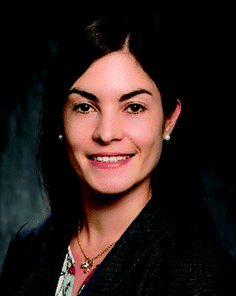Contributors to the emerging investigators issue 2020
Neal Mankad is an Associate Professor in the Department of Chemistry, University of Illinois at Chicago (UIC). His research group studies small molecule activation and energy storage using binuclear metal complexes or radical mechanisms.
I am motivated by advancing sustainability of chemical processes and inspired by the ways in which biological systems are able to accomplish challenging feats using only earth-abundant chemical elements. Metalloenzymes feature active sites that either harness single-electron transfer (SET) chemistry productively or mediate multi-electron ET chemistry cooperatively, often using binuclear metal clusters and always with non-precious metals like Fe and Cu. Similarly, my group has used non-precious metal complexes ranging from mononuclear to binuclear and even tetranuclear to understand and utilize unusual mechanisms like SET processes or cooperative bond activation to solve challenging problems in chemistry. I also enjoy the fact that pursuing bio-inspired design strategies sets up clear hypothesis-driven projects suitable for training student researchers in the scientific method. However, our contributions to Cu-catalyzed coupling reactions that are included in our review in this themed issue were largely discovered serendipitously, so there is also value in following the chemistry where it takes us.
I was born and raised in London, Ontario, and my love for chemistry started at a young age while participating in local science fair competitions. In my final year of undergraduate studies at The University of Western Ontario, I discovered my passion for working in a research laboratory. The process of creating new molecules and studying their properties was fascinating to me. Although I worked on discrete coordination compounds during my PhD studies at UBC, I always found MOFs to be an intriguing class of materials. While carrying out postdoctoral studies at Northwestern University, I gained a new appreciation for MOFs, not only for their structural beauty, but also for their limitless potential in important applications.
![[thin space (1/6-em)]](https://www.rsc.org/images/entities/char_2009.gif) 000 citations, with an h-index of 105. He has been recognised as a Highly Cited Researcher by Clarivate Analytics in 2018 and 2019, and an OSA Fellow.
000 citations, with an h-index of 105. He has been recognised as a Highly Cited Researcher by Clarivate Analytics in 2018 and 2019, and an OSA Fellow.
I was born and grew up in Xuzhou, China. My interest is in developing versatile bioelectronic devices for fundamental and applied biomedical studies. My research group's research thrusts include fundamental materials and chemistry innovations as well as important device and system level applications toward personalized and precision medicine. Some examples of our devices include wearable biosensors for real-time health monitoring and medical micro/nanorobots for rapid drug delivery. Out of the academic life, I spend time with my family members including my wife Yan and our cat Paper; both my wife and I are food, travel, hiking, and snorkeling lovers.
I grew up in Orange County, California near the coast. Although I excelled in math and science through high school, I had little direction about what I wanted to study or what I wanted to be. After high school, I matriculated in UC Berkeley, where I still felt aimless. Upon taking general chemistry (Chem 1A) and seeing the “magic” of chemistry in action, I was sold on my new field of study. My passion for chemistry was further bolstered by my undergraduate research experience at Berkeley. As I have gotten older and more advanced in this field, it has been my goal to maintain the initial curiosity and excitement for chemistry that I had when I began my undergraduate studies. Fortunately, I have had the privilege of working with very talented students and postdocs who bring in creative new ideas on a daily basis. Our lab is working broadly in the areas of metals in medicine. In addressing a range of different biomedical problems, we have carried out all sorts of different experiments, things that I would have never imagined us doing. The best part of this job is that I can continue to learn and grow as a scientist and human being!
The subject of her ultimate research is, of course, the development of new drugs that can predict and prevent diseases, including treatment of the ultimate disease. In particular, she would like to establish an in vitro system that accurately predicts clinical results by combining various fields of translational research. Therefore, these days she is focusing on setting up a 3D cell culture system that mimics the in vivo system using a variety of cell types. In that sense, the dynamic cell properties of somatic cell-derived human pluripotent stem cells or cancer stem cells can be a very valuable tool to study and to develop treatments for human diseases. Therefore, she has been actively conducting research with various joint research teams including chemists and clinicians.
Dr Tian received his PhD degree in physical chemistry from Harvard University in 2010. He then did his postdoc at Massachusetts Institute of Technology in tissue engineering and regenerative medicine. Exploration and curiosity have largely driven his research for new findings. While scientific achievements are important for his lab, the success of his current and past lab members is the essential thing for him. Dr Tian enjoys painting, digital art, and many other artistic endeavours during his free time.
I was born in the UK but completed high school and my undergraduate degree in New Zealand, studying for a BSc(Hons) with Sally Brooker at the University of Otago, before completing a DPhil at the University of Oxford with Paul Beer and then taking up a Killam Postdoctoral Fellowship at the University of British Columbia with Mark MacLachlan. My small research group is interested in many areas of supramolecular chemistry, including the development of robust hydrogen-bonded frameworks and understanding the factors that control self-assembly. Outside of chemistry, I enjoy nerding out about coffee and listening to music, particularly Bob Dylan and Nick Cave. I love living in Canberra – Australia's “bush capital”, as it's incredible to get out of the city to do outdoorsy things. I am particularly keen on running and bouldering, and enjoy getting out to local granite bouldering spots most weekends.
Narayan holds a PhD in organic chemistry from the University of California, Berkeley. She completed her undergraduate studies in chemistry at the University of Michigan, where she later returned as a postdoctoral research fellow in the lab of David Sherman. She started as an Assistant Professor in the Department of Chemistry and the Life Sciences Institute at Michigan in 2015. Since this time Alison and her research group have been recognized as a part of C&EN’s Talented 12, an Alfred P. Sloan Fellow, a Cottrell Scholar and as the inaugural recipient of the Life Sciences Institute Outreach award.
I was born in Chengdu, China in 1983. I received my PhD from NCNST in 2011 under the supervision of Prof. Lei Jiang. After postdoctoral work at Harvard University (Prof. Joanna Aizenberg, supervisor), I began my independent research, and my interests are focused on Liquid Gating Systems, Membrane Science, and bioinspired and smart materials.
With initial interests in both philosophy and chemistry as an undergraduate student, it was the wonder of synthesizing a new-to-this-world molecule that set the direction of my career. My interests evolved to encompass inorganic synthesis, organometallic catalysis, electrochemistry, and mechanistic inquiry. Today, I collaborate with an amazing research group to design catalysts for the sustainable synthesis of chemicals and fuels and to elucidate the molecular-level details of catalytic mechanisms. To support this research, I work to build strong and supportive cultures of safety and wellness. I felt comfortable on campus from the start of my independent career, thanks to my lifelong passion for North Carolina college basketball. I also play basketball whenever I can, continuing a long tradition of chemistry students and faculty playing lunchtime pickup basketball.
I still remember the day when I entered Prof. Qi Wang's lab, my bachelor and master thesis supervisor, and learned how powerful modern computational chemistry and supercomputers are. They together have offered new opportunities to rationalize the underlying mechanisms of a chemical reaction at the atomic level. After nearly ten years training all over the world, I moved back to China and started my research group at Tianjin University. Here we mainly focus on the development of efficient catalysts for conversion of small molecules, i.e. CH4, C2H2, C3H8 and CO2. We are highly interested in integrating modern artificial intelligence algorithms with computational chemistry and trying to develop a new way to computationally describe complex heterogeneous catalytic systems beyond the well-developed research paradigm with single-crystal surfaces, eventually achieving a fast and low-cost screening technique to assist new catalyst design.
I received my PhD degree in inorganic chemistry from Peking University in 2010. After that, I joined the University of California, Los Angeles, as a postdoctoral researcher from 2010 to 2015. I am a chemist of materials with expertise in the fields of nanoscience, thin film optoelectronics, and device development and fabrication, such as photovoltaic cells, LEDs, photo-detectors, etc. I am actively pursuing the development of inorganic and organic/inorganic hybrid materials and their application in energy related optoelectronic devices. In my spare time, I enjoy traveling, reading, and sports.
I grew up in Shantou, a coastal city in eastern Guangdong Province, China. I found chemistry very interesting when I was in high school. During my undergraduate study in SYSU, I spent a semester as an exchange student in HKUST, where I found my passion in fluorescence. I then pursued my PhD and postdoc on fluorescence related research. My current project includes creating new probes and methodologies for monitoring and modulating protein folding and modifications in cells under stress and their implications in disease. Working at the intersection of chemistry and biology, I am motivated by the robustness of chemistry to tackle complex biological problems and hope to promote communications between these two disciplines. I feel fortunate to have supportive mentors, enthusiastic students and open-minded collaborators to inspire and encourage me in my career. Apart from science, I enjoy coffee, traveling, gardening, and observing Australian native birds and animals.
Since my PhD work, I have been fascinated by the problem of how to selectively recognize one metal ion over another. While achieving metal selectivity is a grand challenge for chemists, biology accomplishes this feat for a living. Therefore, my lab aims to learn biology's solutions to challenging metal selectivity problems that have important real-world applications in mining, separations, environmental monitoring and remediation, medicine, and more. We discover, characterize, and re-engineer novel biomolecules and, in collaboration with biologists, engineers, and other chemists, we develop strategies to address a range of technological problems – from recovery and separation of valuable metals, such as the lanthanides and actinides (the focus of the present review in the themed issue), to imaging metal ions in cells in order to study their contributions to infectious and neurodegenerative disease. Outside of the lab, I devote a lot of time to music in several capacities. In particular, I play piano and I give carillon recitals around the U.S. as a member of the Guild of Carillonneurs in North America.
I’ve been interested in science for as long as I can remember. I grew up in a big wooden Victorian house with large wild and rambling gardens. In the ground behind my house were many old, interesting and colourful glass bottles (that were once somebody's trash). I think that ignited a lifelong obsession with glass and bottles. The first time I saw a lab, I was captivated by all the glass and bottles of various things, and I guess learning about their purpose and contents sparked my interest in chemistry! When I am not in the lab, I’m interested in keeping various plants, and Victorian architecture, and shells, and swimming in the lakes and sea. I also have a feather collection. Professionally, I like looking for chemistry that is easy to use, but enables powerful transformations. My background in total synthesis taught me that useful transformations need to be robust and reliable. Overpopulation, pollution, and resource depletion will be defining challenges of our future, and we seek to develop new reactions that will be sustainable far into the future.
During my Bachelor's and Master's Degrees at École Normale Supérieure and Sorbonne University, I met wonderful professors and had the opportunity to do research abroad. I was a visiting graduate student in the labs of Jonathan Nitschke at the University of Cambridge and of Daniel Nocera at MIT. I then completed my PhD focused on molecular electrocatalysis with Marc Fontecave at Collège de France. I have learned so much from my postdoctoral mentor, Jillian Dempsey at UNC-Chapel Hill, as I explored parameters influencing PCET processes. At the end of my postdoc I co-authored a paper teaching electrochemistry to non-experts. Its reception has spurred me to continue working on improving electrochemistry education in the US, which is a critical skill in a growing number of fields. Being French, I find it amusing to now be in Louisiana, the most French part of the USA. I enjoy the gorgeous campus and the unique culture. Aspects of the work I particularly appreciate are student mentoring and community outreach.
| This journal is © The Royal Society of Chemistry 2021 |

